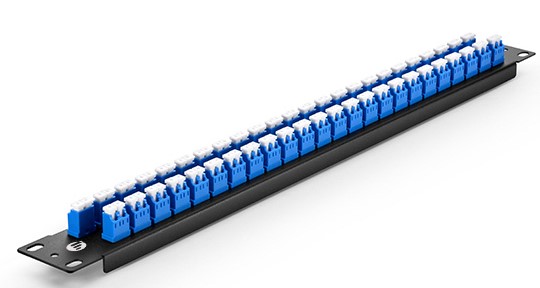What the Fibre Optic Patch Panel Used for?
A Fibre Optic Patch Panel, fiber patch field or fiber jacket field is a number of circuits, usually of the same or similar type, which appear on jacks for monitoring, interconnecting, and testing circuits in a convenient, flexible manner.
And except this, it is also used in recording studios, television, and concert sound reinforcement systems, fibre optic patch panels are widely used to facilitate the connection of different devices, such as microphones, electric or electronic instruments, effects, recording gear, amplifiers, or broadcasting equipment. Patch panels make it easier to connect different devices in different orders for different projects, because all of the changes can be made at the patch panel. Additionally, fibre optic patch panels make it easier to troubleshoot problems such as ground loops; even small home studios and amateur project studios often use fibre optic patch panels, because it groups all of the input jacks into one location. This means that devices mounted in racks or keyboard instruments can be connected without having to hunt around behind the rack or instrument with a flashlight for the right jack. Using a fibre optic patch panel also saves wear and tear on the input jacks of studio gear and instruments, because all of the connections are made with the fibre optic patch panel.

Fibre Optic Patch Panels are switchboard look likes that house cable connections. In a typical setup, the connection consists of a shorter cable plugged into the front side of the patch panel and a longer cable plugged into the back. In this way, patch panels can take the place of otherwise expensive switching equipment.
We’ve all seen examples of patch panels in old movies. The telephone switchboards of old are the progenitors of today’s patch panels. Even today, patch panels are used for telephone connections. Patch panels are also used for cable management in data transfers, however, and for audio and video applications.
In addition to having different lengths of cable connecting to the front and back, patch panels can have different types of electrical connectors as well. One example of this is a breakout box, which has individual connectors on the front leading to a compound connector on the back, into which all of the individual cables plug. Breakout boxes usually have an even number of individual connectors, but this is not always the case.
Why use the Fibre Optic Patch Panel?
Fibre Optic Patch Panels are also used in computer networks. Local Area Networks (LANs) incorporate patch panels by using them to connect the computers of a network to one another and to the Internet. Another network use of patch panels is to connect a LAN to a Wide Area Network(WAN).
A patch panel provides a convenient place to terminate all of the cable runs coming from different rooms into the wiring closet. Of course, one could skip the patch panel and just connect all RJ-45 connectors directly into the hub, but one may miss the following advantages:
You can label the patch panel so you know which room the cable run goes to. Putting the labels on the cables is tougher to read than labels on a patch panel and also there is risk of having the cable labels fall off. A patch panel is a step up from a punch-down block. It usually has a 110 style connectors on the back for the cable to run to the stations. Each of those connectors is wired to an RJ-45 on the front. The RJ-45 on the front provides a spot to plug in a patch cable that goes to the hub. The Type 110-style connectors are usually color-coded with 568A or 568B to match the color of the cable pairs.It is always essential that the style (568A or 568B ) on the patch panel matches the style of the wall plate.
Warm Tips: Fiberstore offers fibre optic patch panel at prices to meet your budget. If you have any questions ,feel free to contact our customer service. We have been patch panel Mmanufacturers for over a decade. Feel free to browse our selection of quality Fibre Optic Patch Panel.